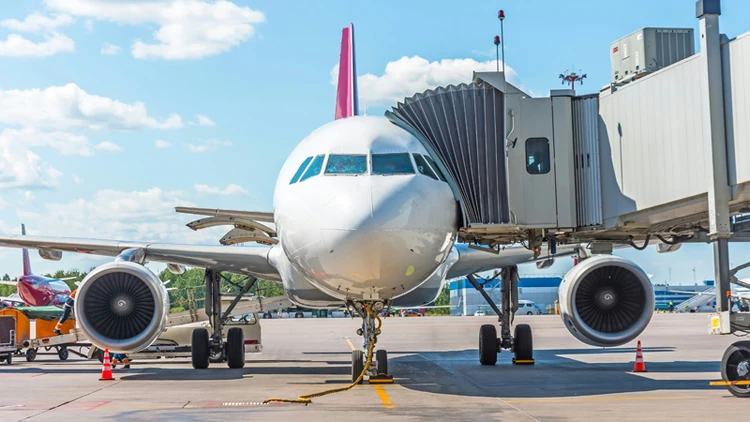Government spending hasn't made a big dent in the problem

America's airports are saddled withdebt and need billions of dollars to modernize.
The infrastructure needs of airports totaled at least $115 billion from 2023 to 2027, according to industry groupAirports Council International.
Investments are neededto digitize and streamline the onboarding of passengers and maintain, modernize and expand infrasturcture such as terminals, public transit, gates, runways and hangars.
Money is largely needed to prepare for growth in cargo and travel: Passenger traffic is expected to more than double in 2040 from 2019 levels, according to the Federal Aviation Administration.
The hubsare key parts of the economy, producing an economic output of $1.7 trillion a year, andrenovating U.S. airports would also mean a less stressful experience for travelers.
But airports are still reeling from the aftermath of the coronavirus pandemic after losing more than $40 billion in revenue, which led them to take on more debt.
Recent government spending hasn'tdone enough: The federal government earmarked $15 billion of funding for U.S. airports through the passage of 2021'sInfrastructure Investment and Jobs Act.
Airports that need the most moneyby state
Some states are in much more dire need than others, according to a ConsumerAffairs review of Airports Council International's 2023 study.
The population of a state and its number of airports stronglyinfluences its cash needs.
By 2027, the five states needing the most infrastructure moneyare California ($26.4 billion), Texas ($14.3 billion), Florida ($12 billion), New York ($6.7 billion)and North Carolina ($6.6 billion).
The five states with the lowest needs are Delaware ($47.5 million), West Virginia ($129.4 million), Vermont($167.4 million), New Hampshire($257 million) and Wyoming($358.4 million).

The average money needed per airport, found by dividing a state's infrastructureneeds by its number of airports, tells a somewhat different story.
By 2027, the five states with the highest average infrastructure need perairport are New Jersey($208.3 million), California ($140.43 million),Massachusetts ($138.5 million), Maryland ($122.2 million) and Florida ($120 million).
The five states with the lowest average infrastructure need perairport are Kansas ($4.9 million), West Virginia ($5.63 million),Mississippi ($7.7 million), Oklahoma ($8.5 million) and Arkansas ($8.9 million).

Debt is also a big problem: Airports had more than $133 billion in debt in 2023.
The five states with the most debt from their airports are New York($29.4 billion), California($26.3 billion), Florida($12 billion), Texas($11.5 billion) and Illinois($11.5 billion).

How can airports get enoughmoney?
Current revenue that airports bring in and federal assistance isn't making the cut.
Regulations also makeit difficult for airports to tap into the cash they need, Airports Council International said.
For instance, airports in other parts of the world can set charges to recover their expenses, but in the U.S. their hands are more tied.
Revenue from the federal government's Passenger Facility Charge program, which charges fees up to $4.50 per passenger at commercial airports, has been capped for more than 20 years with no adjustments for inflation.
The government'sAirport Improvement Funding program, which awards more than $3 billion in grants a year,has also been stagnant for nearly two decades, Airports Council International said, and in most cases the funding can't gotowards terminals, which are the biggest infrastructure expense airports have.
Airports Council International said Congress needs to cut red tape and make reforms, such as boosting the Airport Improvement Funding program and growing its eligibility.
Photo Credit: Consumer Affairs News Department Images
Posted: 2024-09-10 11:47:08




















